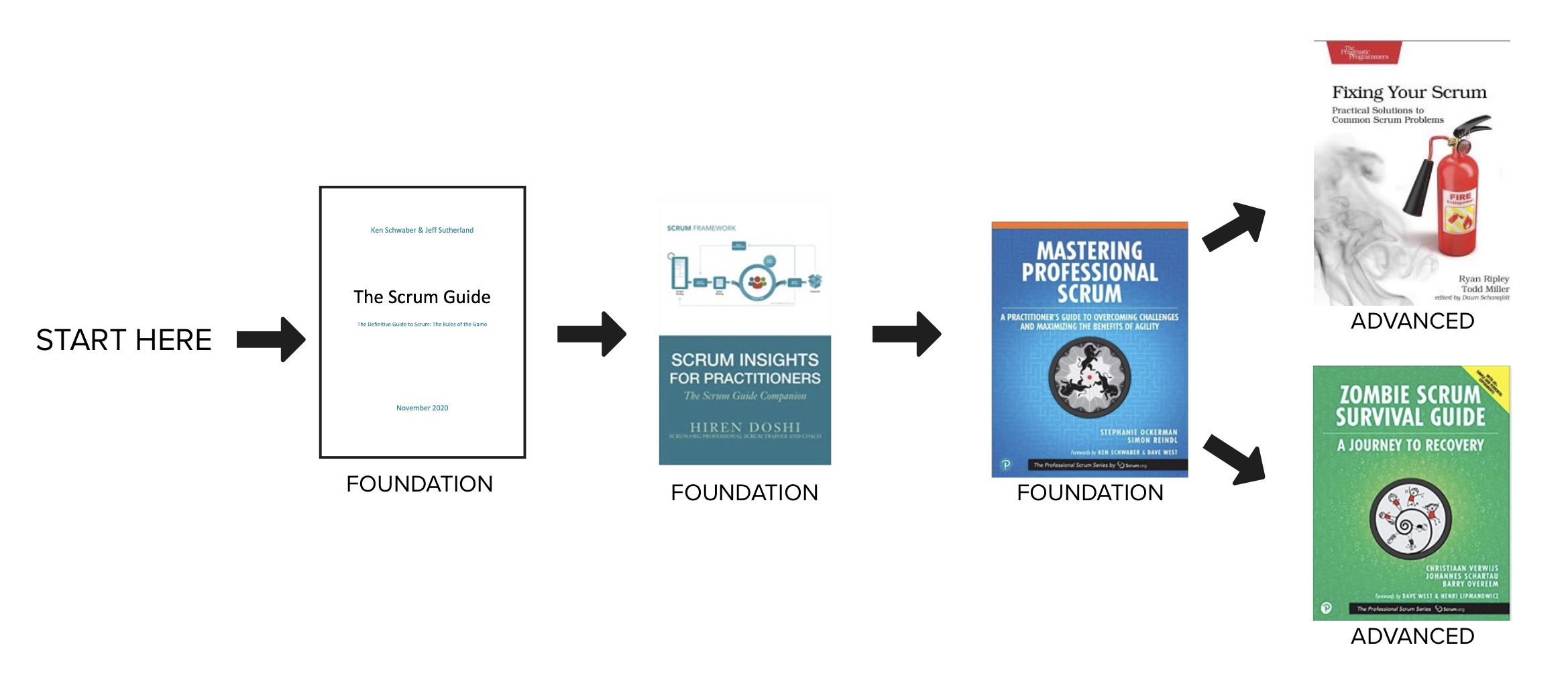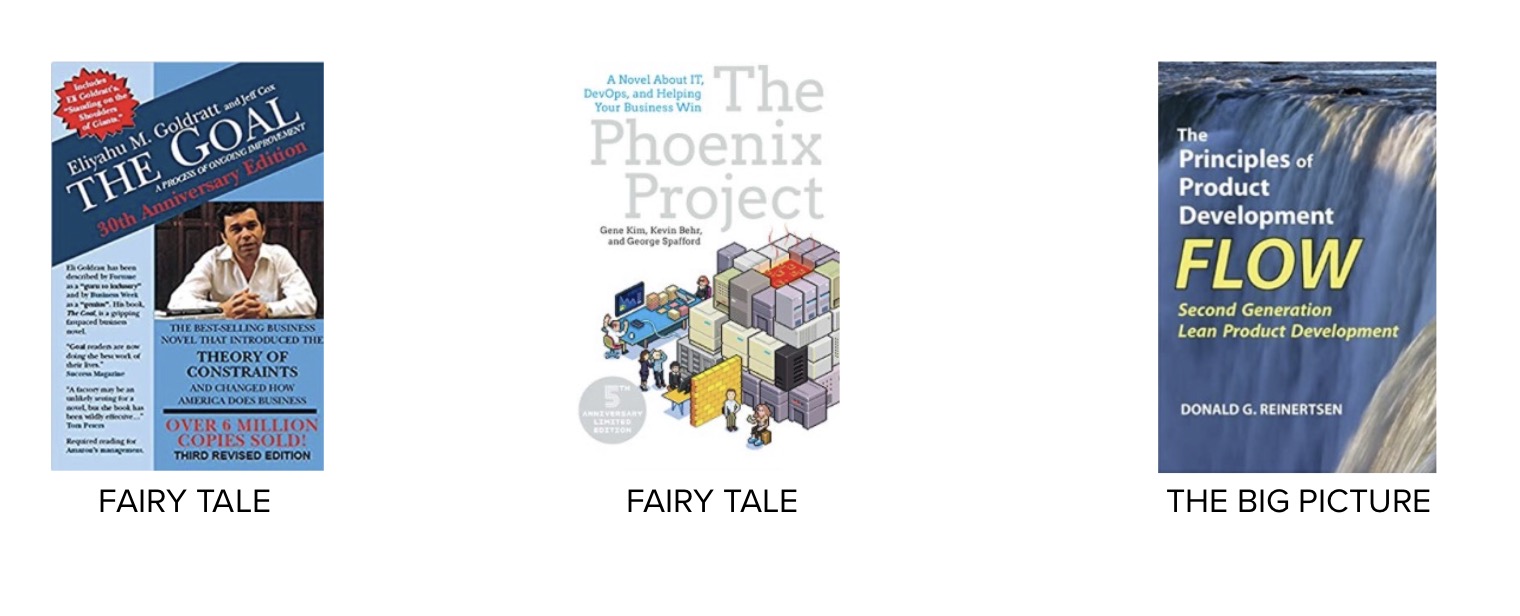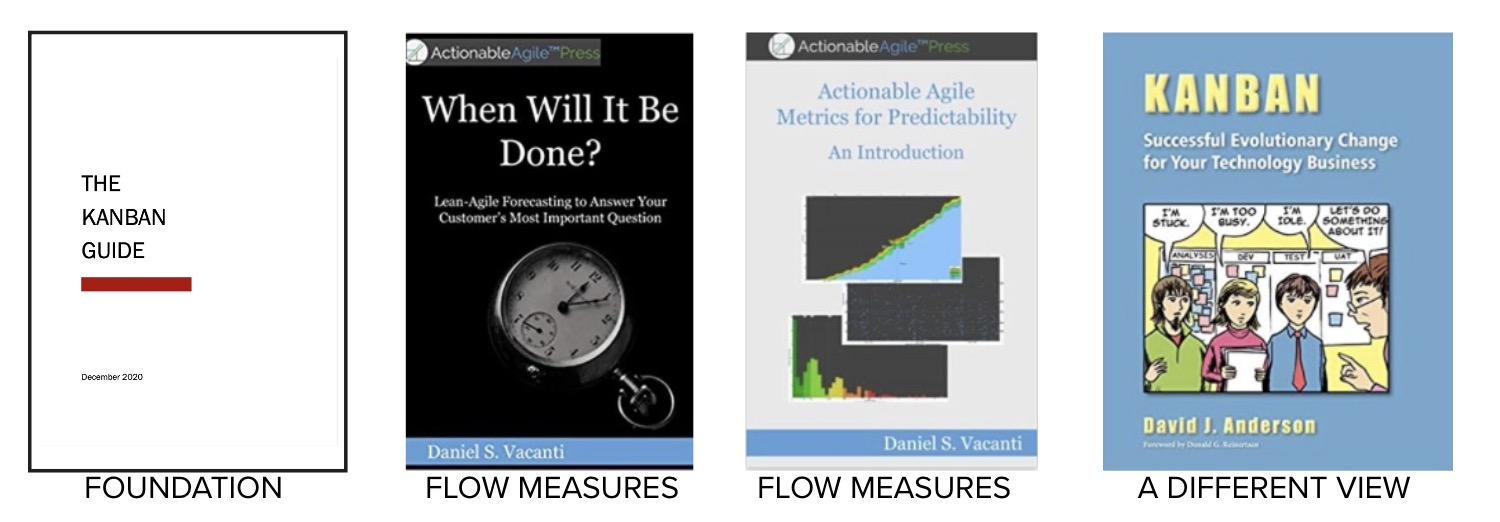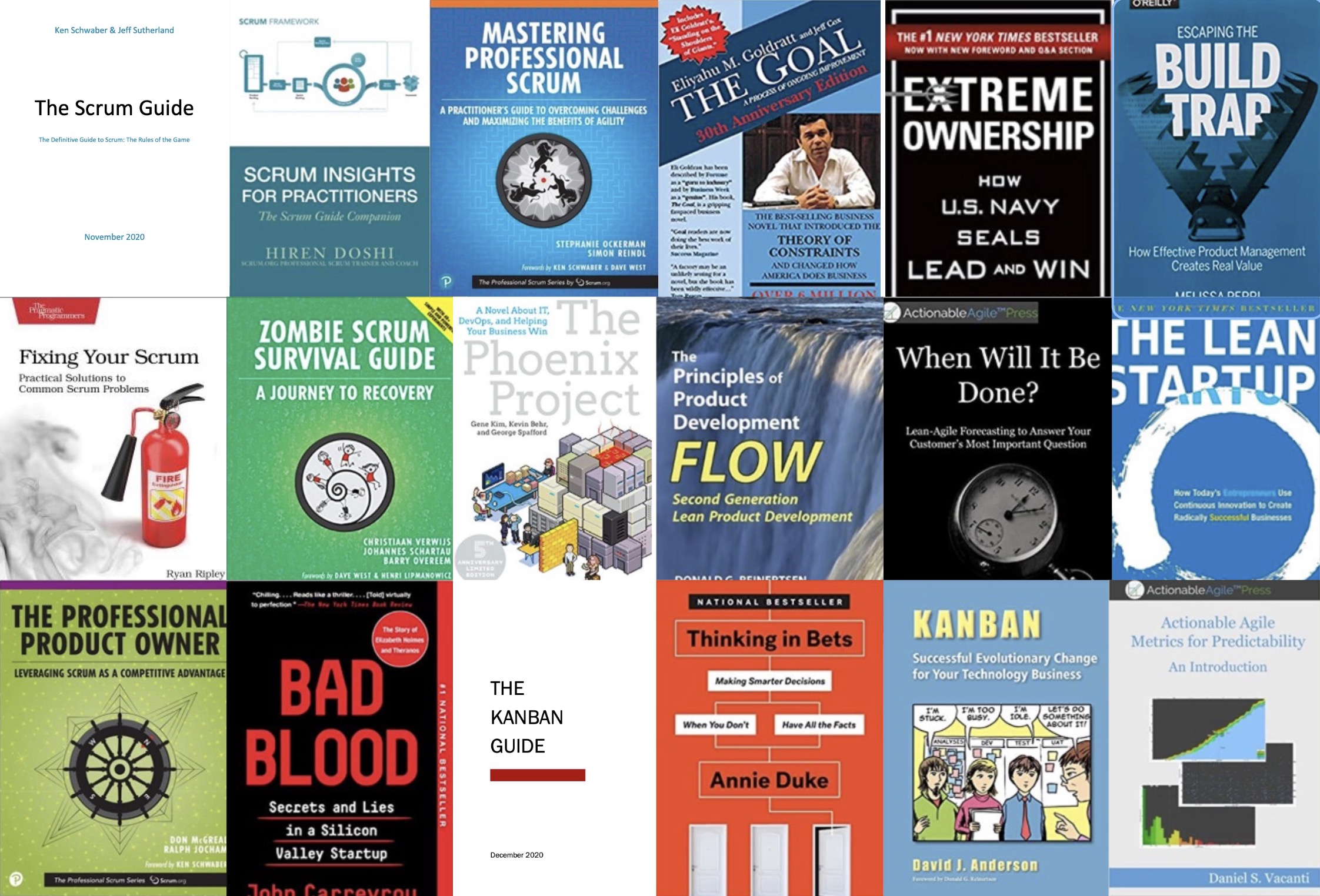Most people serving as Scrum Masters were introduced to the role by way of a couple of days of certification training and some work on the job in a company that values only some of Scrum’s elements. Some people serving in this capacity are not aware of how many concepts, theories, and ideas are behind the practices of Scrum and Kanban. Once I started to dig into the source material rather than the training I was given, I found myself on a journey that was fascinating, educational, and very helpful to me in problem-solving.
If you are on a similar journey, then it is to you that this article is written.
Below I present a list of works to explore and advice for making the most of your engagement with them. This is more than just a reading list. It is a self-motivated, guided tour designed to elevate you from someone who merely reports status and facilitates meetings to someone who not only understands how agility works but also grasps the “why” behind every element and behavior.
By following this path, you should gain the ability to:
- Explain the value lost when skipping a practice or decision.
- Identify the potential value gained by adopting or modifying a behavior.
- Set realistic expectations and develop effective approaches for encouraging change.
Embarking on this journey requires dedication, patience, and a commitment to personal growth. But the rewards—both for yourself and the teams you serve—make it a journey well worth taking.
The Scrum Guide
Schwaber, K., & Sutherland, J. (2020). The Scrum Guide: The definitive guide to Scrum: The rules of the game. Scrum.org. https://scrumguides.org
If you call yourself a Scrum Master and have not yet memorized the Scrum Guide, it’s time to reconsider that title. With only 10 pages, the Scrum Guide is shorter than the lines a soap opera actor might memorize in a single rehearsal. It’s concise, but it’s also the rulebook for Scrum, just as the little pamphlet in a Monopoly box governs that game. To truly embody your role, you must learn and internalize these rules. Know them backward and forward. Be able to reference them seamlessly in conversation.
How can you effectively guide or referee a Scrum team if you haven’t committed its rules to memory?
Many Scrum Masters might claim they read it once, years ago, or dismiss its importance by saying they aren’t into “book learning.” This mindset undermines your credibility. Your role exists precisely to ensure that your team benefits from Scrum expertise. How can you fulfill this responsibility if you don’t have the foundational knowledge at your fingertips?
Memorization doesn’t mean being able to recite the entire guide verbatim like a speech. That level of precision isn’t necessary. However, you should be able to:
- Summarize the essence of Scrum succinctly, such as by reciting the “Scrum in a Nutshell” section.
- Define Scrum as “a lightweight framework used by people, teams, and organizations to solve complex problems with adaptive solutions,” or a similarly accurate paraphrase.
- Recall and explain the core accountabilities of Developers, the Product Owner, and the Scrum Master, along with their respective nuances.
Moreover, you should recognize and understand the subtle phrasing and nuances throughout the text, as these distinctions often carry significant meaning. After memorizing it myself, I became fascinated with the line about how Scrum makes visible problems… so that improvements can be made.” This is a key idea in my point of view on Scrum and how it works. Scrum illuminates opportunities to improve. It’s why I call this site Black Light Agile.
Once you’ve committed the Scrum Guide to memory, you’ll be prepared to delve into supplemental material. These resources will help you understand the value behind each element of Scrum and identify the potential challenges that arise when its practices are neglected.
Memorizing the Scrum Guide isn’t just an exercise in rote learning—it’s the foundation for becoming a true expert in your field.

Books About Scrum
Doshi, H. (2020). Scrum Insights for Practitioners: The lean and agile framework for managing complex projects. Apress. Doshi’s work serves as a 100 page long Scrum Guide with some explanations about why things work the way they do. Once you have memorized the Scrum Guide itself, this book is an excellent work to help expand your understanding of how to use the framework.
Ockerman, S., & Reindl, S. (2019). Mastering Professional Scrum: A practitioner’s guide to overcoming challenges and maximizing the benefits of agility. Addison-Wesley Professional. Go a little further with the framework understanding more about how it is applied.
Ripley, R., & Miller, T. (2020). Fixing Your Scrum: Practical solutions to common scrum problems. Pragmatic Bookshelf. Understand more about the gap between how Scrum has probably been implemented where you work and how it contrasts with how Scrum is supposed to work (and why.)
Verwijs, C., Schartau, J., & Overeem, B. (2020). The Zombie Scrum Survival Guide: Fixing the undead scrum in your organization. Addison-Wesley Professional. Learn common anti-patterns for misapplication of Scrum and some techniques for course correcting. Fun exercises for teams to try to improve their practice and make it effective.
Books About Lean

Goldratt, E. M. (1984). The Goal: A process of ongoing improvement. North River Press. A fictional story written from the first person about a man working in manufacturing who is applying lean principles to a factory and improving how things are working. Steps you through concepts and introduces the Theory of Constraints.
Kim, G., Behr, K., & Spafford, G. (2013). The Phoenix Project: A novel about IT, DevOps, and helping your business win. IT Revolution Press. A fictional story about an IT operations group implementing the concepts of DevOps which are based on Lean thinking. The book covers flow, continuous improvement, and feedback.
Reinertsen, D. G. (2009). The Principles of Product Development Flow: Second generation lean product development. Celeritas Publishing. This book is literally a list of hundreds of principles about how lean concepts fit together. A picture forms in your mind as you begin to connect the dots and understand Reinertsen’s Economic Framework and the trade-offs involved in any decision. This work is essential to understanding Lean.
The order in which you read these books is not important. What is important is for any scrum master to understand flow, feedback, waste, cadence, utilization, bottlenecks, planning ranges, and continuous improvement and their relationships to each other.
Books About Product Development
Most PO’s get little to no help from their Scrum Master. SM’s don’t know anything about product management, know little about managing a backlog and refining it, and instead focus on filling out a template of what they consider an epic or story and following a rote process.
That’s not going to work for you, since you desire to be a professional Scrum Master and level up your abilities to the max of your potential. The following books can help put you in the product management mindset. Also, after reading them, you will understand the empirical component of Scrum.

McGreal, D., & Jocham, R. (2018). The Professional Product Owner: Leveraging Scrum as a competitive advantage. Addison-Wesley Professional. A great book that brings together the concept of a Scrum product owner with a product manager. This book lays the groundwork for understanding that the PO role is not an “agile business analyst” who writes user stories, but rather a product manager who owns a product and works with a Scrum team to develop it.
Carreyrou, J. (2018). Bad Blood: Secrets and lies in a Silicon Valley startup. Knopf. A product development nightmare that helps you see how to properly work as a team and use empiricism (transparency, inspection, and adaptation) to develop your product by showing you every single one of those things being done wrong. A great read!
Perri, M. (2018). The Build Trap: How Effective Product Management Creates Real Value. O’Reilly Media. Melissa Peri has authored a manifesto on product management and how it could be done differently in businesses across the planet. Easy to read and filled with great ideas. Anyone coaching PO’s or trying to be one should read this book.
Duke, A. (2018). Thinking in Bets: Making Smarter Decisions When You Don’t Have All the Facts. Portfolio. A great book that emphasizes the importance of experiments and empiricism. Written by a world champion poker player, this book teaches how life is poker rather than chess, and that placing bets the right way is important.
Willink, J., & Babin, L. (2015). Extreme ownership: How U.S. Navy SEALs lead and win. St. Martin’s Press. Jocko was an officer in the US Navy Seals, and here he explains how their leaders are trained to assume responsibility for everything that happens. There are distinct principles discussed which every leader could stand to learn. Scrum Masters, Product Owners, and Architects – learn to stop finger pointing and say instead, “It’s my fault.”
Ries, E. (2011). The Lean Startup: How Today’s Entrepreneurs Use Continuous Innovation to Create Radically Successful Businesses. Crown Business. Eric Ries has authored the definitive work on how product development is often exploratory and cannot be planned. A call for businesses to embrace uncertainty and use empirical product development to explore the unknown to learn the truth.
Books About Kanban
A Scrum Master who doesn’t know Kanban is limited in how they can help a team improve and measure that improvement. Without Kanban, you will be forever chasing planning tools like velocity and treating them as performance measures. Kanban enables flow metrics, and it helps a team visualize the flow of their work. It’s an incredible tool that complements Scrum without bumping into any of its rules. Further, a good Scrum Master should recognize when an organization is not going to allow anything that Scrum requires to be successful to happen and the pivot to teaching a team Kanban and working up from there.

ProKanban.org. (n.d.). The Kanban guide. ProKanban.org. Retrieved December 31, 2024, from https://prokanban.org. There is no “Scrum Guide” for Kanban, because no one owns Kanban. Unlike Scrum, which is shared with everyone but owned by two people, Kanban is completely open source. I prefer the clear, concise guidance provided by Daniel Vacanti to the complex viewpoint held by David Anderson. Vacanti’s guide is minimalist and elegant like its Japanese roots. David Anderson’s book creates many rules and a lot of terminology that I find as complex as Scrum. When looking for alternatives to Scrum, I prefer to go to the minimum.
Vacanti, D. (2014). Actionable agile metrics for predictability: An introduction. Createspace Independent Publishing Platform.
Vacanti, D. (2016). When will it be done?: A guide to predicting the delivery date of work in process. Createspace Independent Publishing Platform.
Both of Vacanti’s books discuss flow metrics and true predictability from historical data. Today, many teams thinking they are agile teams are using relative estimation with points and velocity as performance measures instead of planning tools. Vacanti discusses why this is a mistake and offers alternative measures based on facts.
Anderson, D. J. (2010). Kanban: Successful evolutionary change for your technology business. Blue Hole Press. Anderson’s approach to Kanban is pretty popular in Agile circles. I do not think it is a bad approach. He goes pretty far in his book showing how Kanban can be scaled up into a pretty complex system emphasizing flow.
SAFE
SAFE has always been documented on the sweeping web site at https://scaledagileframework.com. However, as if this writing, Scaled Agile, Inc. is pulling a lot of content behind a paywall where only certified, licensed SAFE coaches can reach it. Will this increase revenue for the company? Or, will it cause companies to abandon SAFE because they can no longer reliably check their math on a web site that is freely available? Time will tell.
As a Scrum Master, you cannot understand what effects SAFE is trying to create through its highly complex structure and rules without reading about Lean and Kanban. So, even if you already think you understand SAFE, the above reading list will deepen your understanding about why SAFE has the rules it does.
This is Just The Beginning
Consider these books the minimum. There are many others you should explore, some of which are incredibly important. However, these books are focused on helping you develop solid intermediate competence in enabling a business to achieve agility. In a future article, I will cover additional books you might want to consider.
There are other books on Scrum and related topics that some may be surprised I left out. These books might have been great for others, but due to the order in which I read them, they may have simply repeated concepts I had already encountered. As a result, they didn’t make a lasting impression on me at the time.
I once had a development leader get angry when I suggested empowering their team and stepping back from micromanagement. They said, “That’s just some nonsense from a book!” I’ve never heard anything so absurd. All math and science are learned from books. We learn not to repeat our mistakes through books. We write and share our thoughts and experiences through books, and despite the internet, streaming audio, and video, our primary means of learning remains through written words. Not all books are of equal value, but the ones on agility and related ideas share common perspectives. You won’t find many books that recommend functional silos, micromanaging people, disempowering individuals, or relying on long-range plans and documents to manage risk.
Reading a wide range of works will not only teach you the why behind everything in your field, but it will also give you confidence that you’re on the right track, even with things you haven’t yet had the opportunity to try yourself.
Reading is humanity’s secret weapon. It enables us to learn from others’ experiences without suffering their consequences. Through books, we skip to the front of the line and stand on the shoulders of giants.
Read.


